Food from Tibet: Exploring Diverse Flavors from the Roof of the World
Beyond its stunning landscapes and profound spirituality, Tibet offers a variety of foods that satisfy the palates of both locals and tourists. In this guide, we will explore a wide range of Tibetan food, including the three main meals, beverages, snacks, vegetarian options, and more. Keep reading to immerse yourself in Tibet's distinctive food culture.
 What are the Most Popular Foods in Tibet?
What are the Most Popular Foods in Tibet?
 What are the Breakfast Foods in Tibet?
What are the Breakfast Foods in Tibet?
 What are the Lunch and Dinner Foods in Tibet?
What are the Lunch and Dinner Foods in Tibet?
 What are the Teas and Drinks in Tibet?
What are the Teas and Drinks in Tibet?
 What are the Desserts and Snacks in Tibet?
What are the Desserts and Snacks in Tibet?
 What are the Vegetarian Food Options in Tibet?
What are the Vegetarian Food Options in Tibet?
 Where to Try Authentic Tibetan Food during My Trip?
Where to Try Authentic Tibetan Food during My Trip?
 Are There Other Cuisines Besides Local Food in Tibet?
Are There Other Cuisines Besides Local Food in Tibet?
What are the Most Popular Foods in Tibet?
There are many reasons why particular food items in the Tibetan menu have gained popularity over the years. In the tussle between palate and practicality, sometimes, the latter is the clear winner. Apart from that, there are other reasons like cultural significance, adaptability to the environment, and their ability to nourish both the body and soul in Tibet's unique setting. Here are some of the most popular foods in Tibet:
Tsampa: This heartwarming staple of roasted barley flour is made from highland barleys that grow in abundance in vegetation-devoid Tibet. It embodies Tibetan resilience and sustenance. Its preparation is simple, making it accessible even in challenging environments.
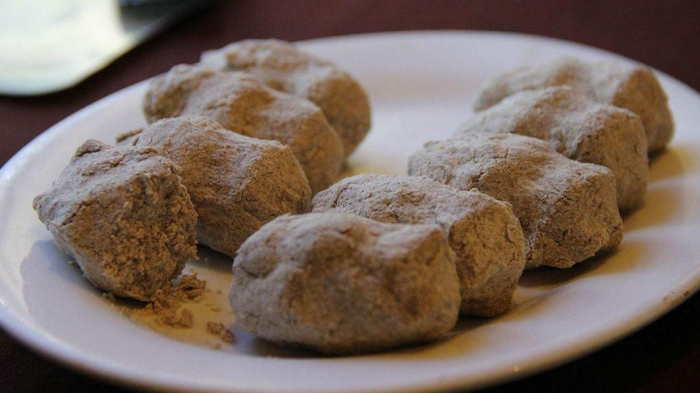 Tsampa is the heartwarming staple food in Tibet.
Tsampa is the heartwarming staple food in Tibet.
Momos: Delightfully versatile dumplings, whether steamed, fried, or in soup, are a cherished reflection of Tibetan households' creativity and unity. They symbolize unity, as families often gather to prepare them, fostering a sense of togetherness.
Butter Tea: A cultural cornerstone, this comforting blend of tea, yak butter, and salt reflects both practicality and the warm hospitality of Tibetan homes. It provides warmth and energy in the harsh Tibetan climate.
Thukpa: A warm hug-in-a-bowl noodle soup laden with yak meat or veggies that captures the essence of Tibetan comfort and sustenance.
Yak Meat: A tribute to the plateau's rugged landscape, succulent yak meat embodies the hardiness of the Tibetan people. It is cherished due to its rarity and significance. In the challenging high-altitude environment, yaks provide sustenance, making their meat a valuable source of nutrition.
Yak Yogurt: Made from Yak milk, Yak yogurt's popularity comes from its refreshing taste and connection to Tibetan pastoral life. It's a source of nutrition, and its preparation reflects the simplicity and purity of the region's traditional lifestyle.
What are the Breakfast Foods in Tibet?
Compared to the hearty American breakfast or the classic English morning spread, Tibetan breakfast offers a unique experience with its earthy flavors gathered from locally grown and locally procured ingredients like barley, yak, and dairy.
In Tibetan homes, breakfast takes the spotlight, celebrated with filling and flavourful roasted barley flour porridge. Sip some butter tea to warm you up, or relish Tibetan noodles or Tibetan bread like Balep or Sha Phaley for comfort and energy. And for a refreshing touch, have some yak yogurt!
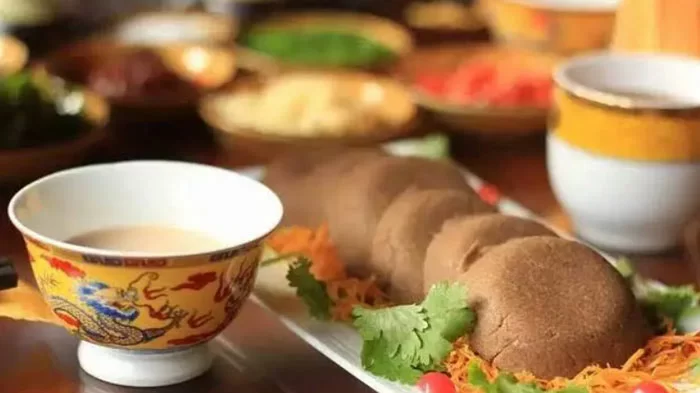 Tibetan breakfast is important in Tibetan homes.
Tibetan breakfast is important in Tibetan homes.
What are the Lunch and Dinner Foods in Tibet?
Lunch and dinner in Tibet reveal culinary methods that focus on boiling and frying, with some steamed and raw dishes and less than a few stir-fries. Basic ingredients include Tibetan barley, beef, mutton, and their byproducts like ghee and milk residue. Though seasonal veggies were scarce, recent efforts have introduced more vegetables to Tibetan tables, increasing the appeal of stir-fried dishes.
For an authentic Tibetan meal, decorate your plate with yak meat dishes, momos with varied fillings, and noodle soups like Thentuk and Gyathuk. Try Balep or Sha Phaley bread, often with Rutang or beef broth soup. For vegetarian options, try Shamey Momo, Shamey Mothuk, or vegetarian soup dumplings, and Shamey Tsel or vegetable stir fry containing hardy vegetables like cabbage, radish, carrot, and more.
 The food for lunch in Tibet are more diverse.
The food for lunch in Tibet are more diverse.
What are the Teas and Drinks in Tibet?
For countless years, Tibetan tea has been a part of everyday life for Tibetans, deeply rooted in their food culture. Two popular types of Tibetan tea stand out: yak butter tea and Tibetan sweet tea. Yak butter tea is often enjoyed alongside tsampa, while Tibetan sweet tea is favored by foreign visitors.
After lunch, consider spending your afternoon in a traditional tea house. These cozy spots offer a chance to relish a pot of Tibetan tea while observing locals engaged in conversations. Beyond tea houses, you can delve into the authentic Tibetan tea culture within local families.
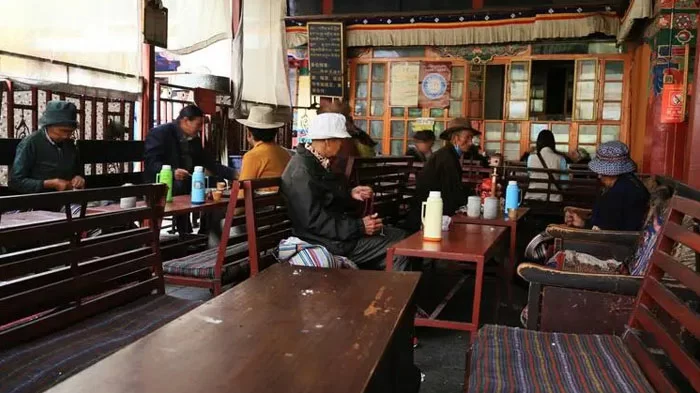 Locals like to enjoy teas in traditional Tibetan teahouse.
Locals like to enjoy teas in traditional Tibetan teahouse.
In Tibet's chilly regions, wine plays a crucial role in warming the body. The most renowned alcoholic beverage here is Tibetan barley wine. Made from barley, rice, or millet, this wine has moderate alcohol content, suitable for individuals of all ages.
Barley wine takes center stage during festivities like festivals and weddings. During these gatherings, toasts commence with the elder raising their wine bowl, followed by others in a clockwise manner. It's a gesture of respect, involving dipping the wine with a finger and a flick. This tradition is an integral part of Tibet's vibrant food culture.
What are the Desserts and Snacks in Tibet?
Tibet's delightful desserts and snacks offer a glimpse into its unique flavors. Enjoy sweet rice Dresil on special occasions, along with tasty pancakes, fried potatoes, and chewy dried yak meat for satisfying treats. Indulge in the distinct flavors of dried cheese and creamy yak yogurt, with the latter being a festival favorite. The tradition of air-dried meat adds a portable and crispy snack rooted in the nomadic way of life. These treats capture the essence of Tibetan cuisine and culture.
 One can indulge in the distinct flavors of creamy yak yogurt.
One can indulge in the distinct flavors of creamy yak yogurt.
What are the Vegetarian Food Options in Tibet?
Tibet's culinary landscape offers a rich array of vegetarian options to savor. From comforting vegetable thukpa and momos to hearty barley dishes and flavorful vegetable curries, there is a diverse range of plant-based delights awaiting your taste buds. In bustling cities like Lhasa, vegetarian restaurants are everywhere, making dining choices convenient.
Interestingly, the evolution of Tibetan momos, originally crafted with meat fillings, has birthed the "shamey" variety – momos without meat. This shift reflects changing tastes and values. These veggie momos, often filled with potatoes and other delights, exemplify this transition.
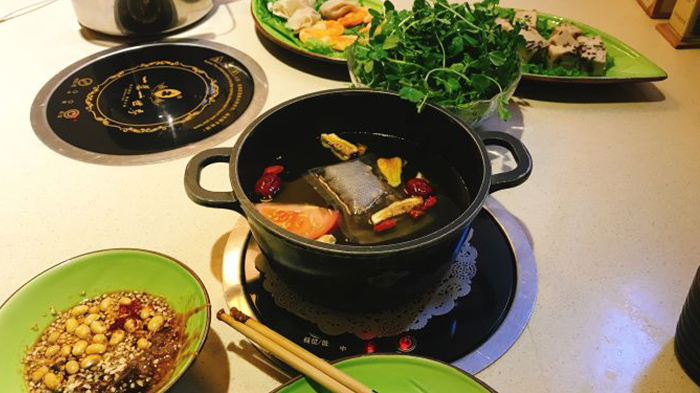 Tibetan vegetarian hot pot served in Lhasa's restaurants
Tibetan vegetarian hot pot served in Lhasa's restaurants
Delve deeper into Tibetan flavors with dishes like Shamey Mothuk, a soul-warming vegetable dumpling soup, or the simple yet flavorful Shamey Tsel, featuring "meatless" veggies like mushrooms and cabbage. This naming tradition, like "sha" (meat) + "mey" (without) + "tsel" (vegetables), pays homage to the region's historical scarcity of produce due to its challenging terrain. Modern influences have also brought about innovations like Trang Tsel, a refreshing cold vegetable salad, bridging heritage and innovation. Whether you're an ardent vegetarian or just seeking a veggie-infused culinary experience, Tibet's culinary scene will cater to your preferences.
Where to Try Authentic Tibetan Food during My Trip?
Local restaurants are a great starting point, offering classic dishes in a lively atmosphere. If you're seeking a more intimate experience, guest houses provide a cozy setting to enjoy authentic flavors prepared with care. Tea houses offer a unique blend of refreshments and local fare, creating a perfect opportunity to taste traditional delights.
For an immersive experience, don't forget to explore the culinary treasures of Tibetan family homes, where generations of recipes come to life. Remember that monastery guesthouses offer a chance to relish traditional meals, often prepared with time-honored techniques.
Are There Other Cuisines Besides Local Food in Tibet?
Indeed, while exploring the culinary landscape of Tibet, you'll find more than just local delights. The region has embraced a variety of cuisines that reflect its diverse cultural influences. If you're craving familiar flavors, you can savor Western dishes that bring a taste of home to the high plateau.
Indian cuisine adds its aromatic spices and rich curries to the mix, while Nepalese dishes introduce their own unique blend of flavors. For those who enjoy a fiery kick, the bold and flavorful offerings of Sichuan cuisine are readily available. So, amidst the traditional Tibetan fare, you'll have the chance to embark on a global culinary journey, sampling an array of cuisines that have found their place in this captivating region.
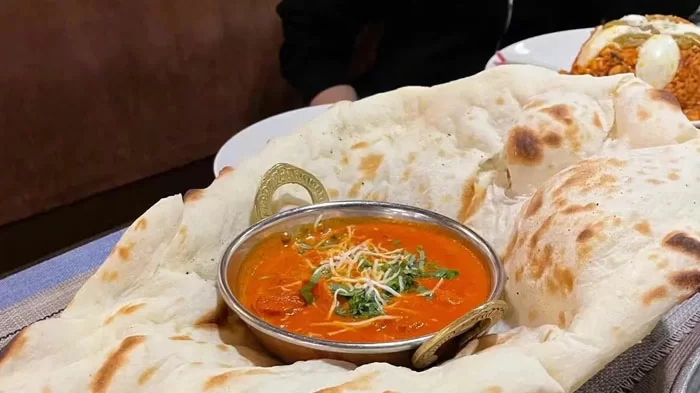 The Nepalese dishes served in Lhasa's restaurants.
The Nepalese dishes served in Lhasa's restaurants.
Tips on Enjoying Tibetan Food when Touring Tibet
When exploring Tibetan food during your Tibet tour, here are some tips to make the most of it.
Be open to trying the local flavors – they're unique and delicious. Yes, some flavors might feel unique and can be an acquired taste, but be patient. Remember, the high altitude might affect your appetite, so take it easy. Your tour guide can suggest great places to eat, so keep them in the loop with your dietary preferences.
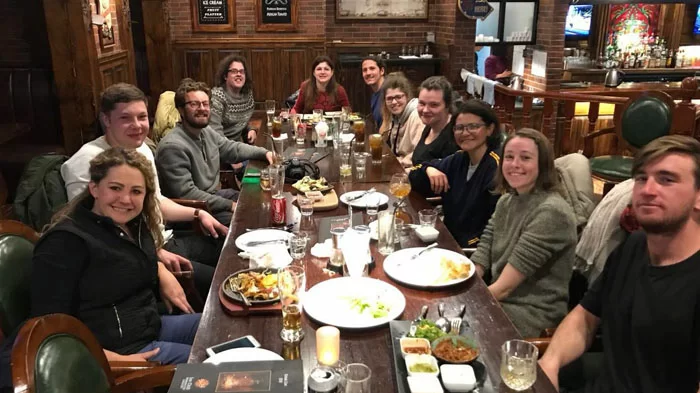 The tourists are enjoying the Tibetan cuisine.
The tourists are enjoying the Tibetan cuisine.
It's important to respect local customs, like using your right hand to eat. Also, don't forget to try street food – you might find some tasty surprises there. Enjoy your food adventure in Tibet with these tips in mind!
Conclusion
Tibetan cuisine paints a vibrant picture of tradition and taste. From yak meat dishes to soothing butter tea, every bite carries the essence of resilience. The emergence of vegetables and local wines adds depth to the narrative. As you explore Tibet's landscapes, let its flavors transport you to the heart of the Himalayas, creating cherished memories that blend taste and culture. Whether traditional or international, Tibet's culinary wonders invite you to savor its rich heritage and create lasting moments.
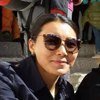
Kham Sang is responsible and honest with more than six years of guide experience in Tibet.She has strong interpersonal skills and can communicate effectively with tourists.
Related Articles & Posts
Most Popular Tibet Tour Packages
-

Lhasa - Gyantse - Shigatse - Everest Base Camp - Shigatse - Lhasa
USD939
View Details -

Lhasa - Gyantse - Shigatse - E.B.C - Saga - Kailash Trek - Darchen - Lake Manasarovar - Saga - Gyirong - Tingri - Lhasa
USD2059
View Details -

10 Days Lhasa to Everest Base Camp and Namtso Lake Small Group Tour
Lhasa - Gyantse - Shigatse - EBC - Shigatse - Lhasa - Namtso Lake - Damxung - Lhasa
USD1289
View Details -

8 Days Driving Across Himalaya Overland Adventure from Kathmandu to Lhasa
Kathmandu - Gyirong - Everest Base Camp - Tingri - Shigatse - Gyantse - Lhasa
USD1069
View Details -

4 Days Lhasa Impression Small Group Tour: Explore the Heart of Tibet and Mingle with the Locals
Lhasa
USD509
View Details -

Lhasa - Gyantse - Shigatse - Everest Base Camp - Gyirong - Kathmandu
USD979
View Details -

Lhasa - Gyantse - Shigatse- Lhasa
USD799
View Details -

13 Day Lhasa, Mt. Everest, Mt. Kailash, Lake Manasarovar and Kathmandu Adventure Tour
Lhasa - Gyantse - Shigatse - EBC - Saga - Darchen - Kailash Trek - Darchen - Saga - Gyirong - Kathmandu
USD2059
View Details


.jpg)












